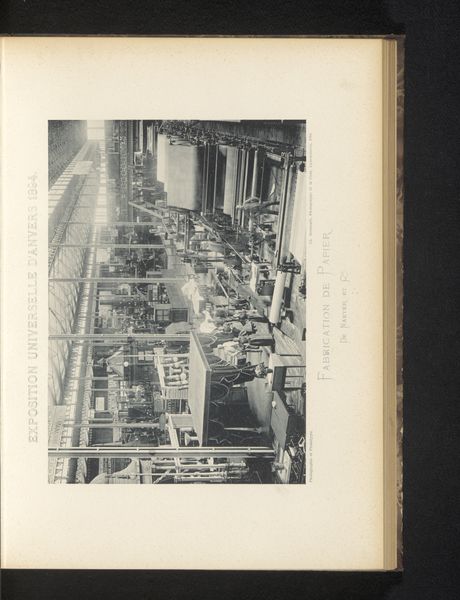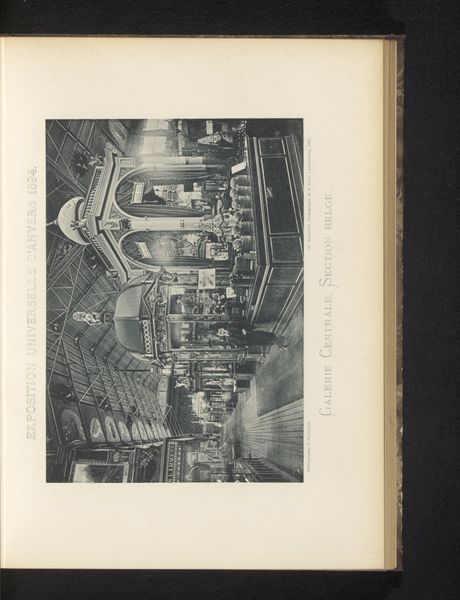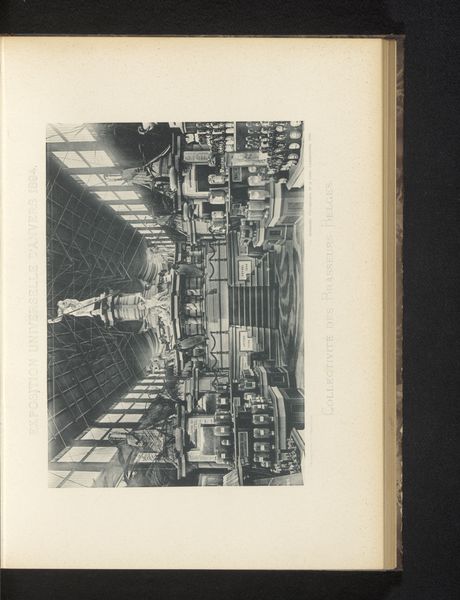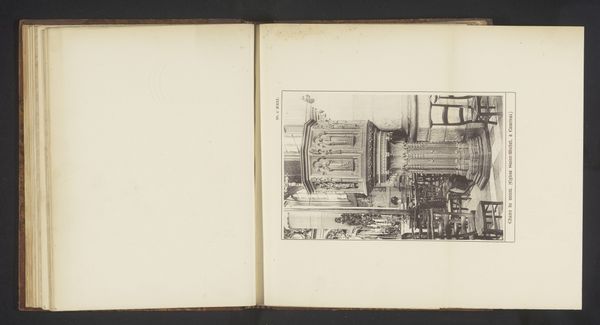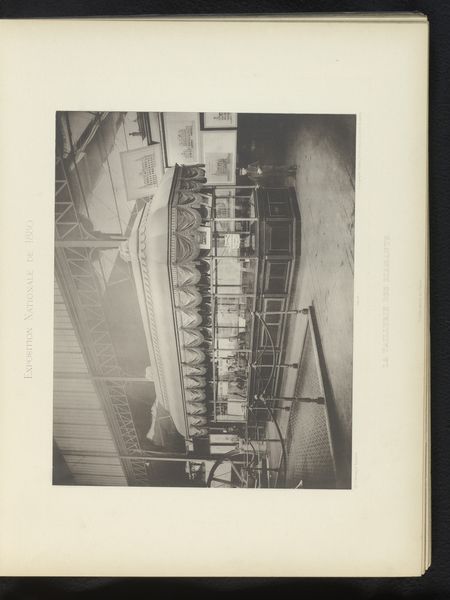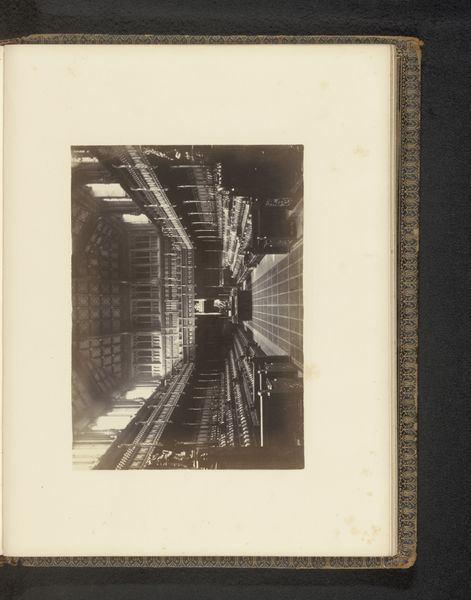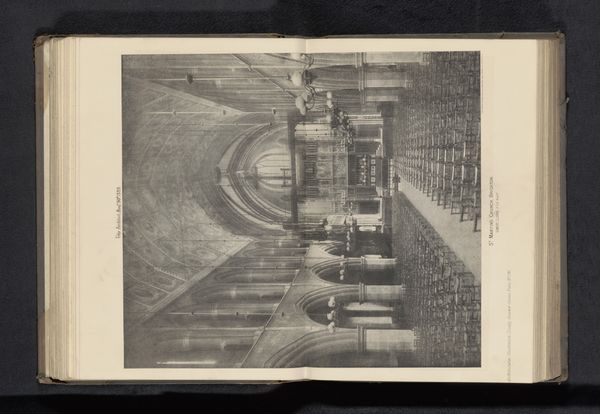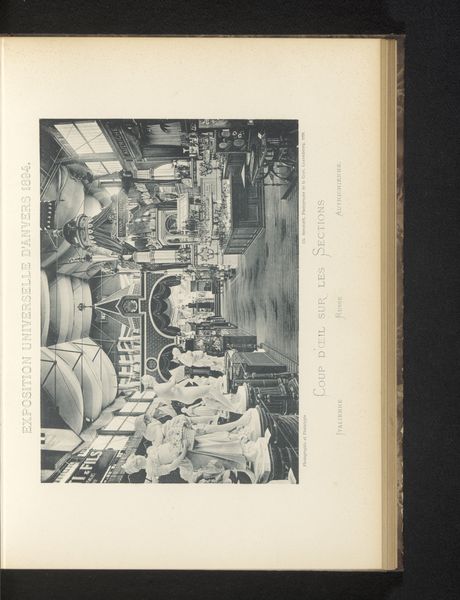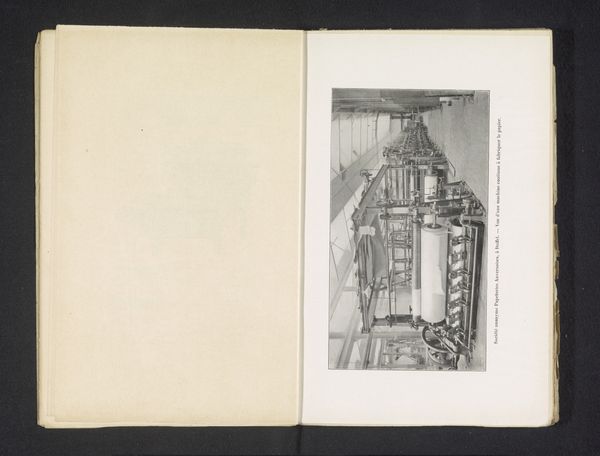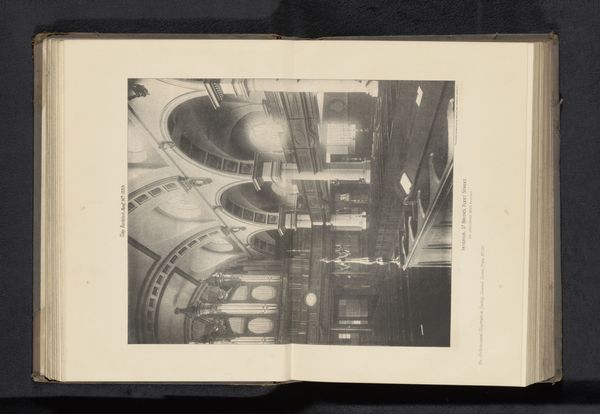
Gezicht op een opstelling van Société Anonyme John Cockerill uit Seraing op de Wereldtentoonstelling van Antwerpen in 1894 1894
0:00
0:00
print, photography
# print
#
photography
#
geometric
#
history-painting
Dimensions: height 153 mm, width 216 mm
Copyright: Rijks Museum: Open Domain
Curator: This is a fascinating print showcasing the Societé Anonyme John Cockerill's exhibit at the 1894 Antwerp World’s Fair, captured through the lens of Charles Bernhoeft. What are your first thoughts? Editor: It's intensely industrial. All those pipes, gears... you can almost feel the weight of metal. And that cavernous space; you can get a sense of just how vast it is and how industry must have felt back then. Curator: It really does highlight the grand scale of industrial ambition at the time. Bernhoeft captured not just the machinery itself but the context, placing it firmly within the World’s Fair. These fairs were key to showcasing industrial progress. They created political, social, and commercial links and served as monumental places of imagery-making for states and private sector companies alike. Editor: Thinking about materiality, it’s interesting how photography itself, as a fairly new industrial process, becomes the medium to document this other industrial feat. It also forces us to ask questions: how many people were involved in producing this equipment and preparing its transport for exhibition? And this print allows that effort to have some permanence beyond its installation within the context of the world’s fair. Curator: Exactly. The print form solidifies the moment and perpetuates the Cockerill company's image of modernity and prowess. Looking closely, one sees this exhibition stand appears somewhat austere. These industrial firms would want to highlight strength, precision and scientific design in how they displayed. What kinds of labor arrangements existed to keep it maintained at its highest performing potential. Editor: I am left reflecting upon what the fair experience would be for many of its spectators. These fairs are places of display that offer up access for various audiences. Did everyone see the advances in industry in the same way? How might have someone without money for travel or someone who works within these kinds of factory facilities perceive such a space? Curator: Indeed, these events acted as spectacles of aspiration but certainly presented complex issues concerning labour and spectatorship at the turn of the century. It's compelling how much this one image opens up in terms of discussions on material processes and social structures. Editor: Absolutely. This single print functions as both a record and a symbol.
Comments
No comments
Be the first to comment and join the conversation on the ultimate creative platform.
